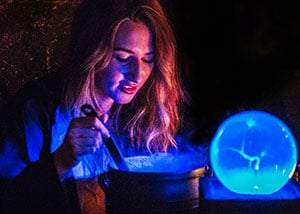It’s important to dream big. And nothing helps those dreams become a stunning reality better than knowing what to expect from your larger-than-life ambitions.
If your big dream means hopping into the pilot’s seat of a helicopter or airplane to learn to fly, here are some helpful hints on what your sky-high day will look like.
Arrival: More Than Just a ‘Welcome to Flight School’ Speech
When embarking on an introductory flying lesson, you can expect to be much more than simply a spectator — starting as soon as you set foot on airport property.
- Complete any registration needs. Typically this includes presenting a valid ID and signing off on any required waivers/paperwork.
- Enjoy a meet-&-greet with your FAA certified flight instructor.* This brief orientation will generally include an overview of the experience at hand, information about the aircraft’s mechanics, and even fun facts about the world of aviation and the physics behind it.
- Prepare for take-off! Participate in assisting your pilot in completing the pre-flight check on your aircraft. This will jump-start your familiarization of the M.O. associated with the controls of the plane or helicopter.
*An important note: When the flight-bug bites and you’re looking for a reliable flight academy, be sure to confirm the school’s instructors are all certified by the Federal Aviation Administration (FAA). If you choose to book a learn to fly lesson through Virgin Experience Gifts, you can rest assured we’ve done our research; all pilots we partner with put your safety first and are up to snuff on all certifications, insurance, and other forms of validation.
Up, Up & Away: Let the ‘Learn to Fly' Lesson Begin
Fasten your seatbelt and prepare for the flight of a lifetime! Here are some flying lesson facts to clarify common questions (who, what, where, when, why, or how) that may come into play before, during, or after your lesson. Keep in mind: many of these policies are put into place by the FAA to keep everyone involved in/around this experience safe — from the ground below to the air above.
- The (FAA) timing meter on a plane or helicopter kicks on to record a ‘flight time’ the moment the aircraft’s engine starts, and runs up until the engine is turned off. So if you arrange for a 30-minute flight, some ground time will inevitably be involved.
- Your pilot wants to be airborne just as much as you do — so rest assured he/she will get you in the air ASAP and remain there as long as the aircraft’s (FAA) meter legally allows.
- Taxiing, take-off and landing are completed by your flight instructor.
- Once you reach cruising altitude, it’s your time to shine with hands-on pilot training! Your instructor will allow you to take control of the aircraft, while providing on-the-spot coaching.
- The instruction space in most cockpits is similar to the appearance of some driving school cars, with side-by-side seats and a set of hand-controls in front of each.
- Other aircraft models may utilize a ‘one-in-front-of-the-other' seating and instruction style.
- Tactics taught on your learn to fly lesson are largely dictated by your personal comfort level.
- Spectators are often welcome in the aircraft, barring available seating and any age or weight restrictions. This varies among flight schools.
- Most flight academies have a lounge area with windows for spectators to enjoy, if they are not able to join you on the plane or helicopter.
- Have a nearby hot spot you wish to see from above? Just let your pilot know, and he/she will to try to accommodate this on your aerial route, so you can check out your home, favorite golf course, beach, etc. in a brand new way!
It's Official: Your ‘Learn to Fly' Lesson is Complete
So you’ve finished your very first pilot training session! Sure, it was for recreational purposes, rather than the pursuit of an actual pilot’s license. But! If you now have a hankering for more aerial training, here’s some great stuff to know.
- Upon landing, feel free to chat with your pilot about the flight, what you learned, and any lingering questions. And don’t forget to take some photos!
- Many flight schools reward first-time participants with a certificate of completion. This informal award is typically for bragging rights when you have friends over for dinner (versus logging formal flight training hours).
- Want to know more about how to obtain a private pilot’s license? Ask your instructor about his/her flight academy’s resources or any referrals.
- Ready to really up the ante in the air up there?! Opportunities abound across the U.S. for the chance to learn to fly in some extra-exhilarating ways! Try your hand at pulling tricks as an aerial acrobatics pilot. And if you dare to take your Top Gun enthusiasm to the next level, experience the thrill of being a fighter pilot for a day!
For more ways to explore the air up there as the passenger or the pilot of an aircraft, check out Virgin Experience Gifts’s impressive array of flying experience gifts available across the U.S.!





Great blog Kristin… Nice tips on getting the license and learning to fly an airplane. You have described here whole process from beginning to end. Great place to be.
Thank you, Fred! Here’s hoping it continues to inspire some folks to tackle some bucket list wishes for the upcoming new year — wooohoooo! 🙂